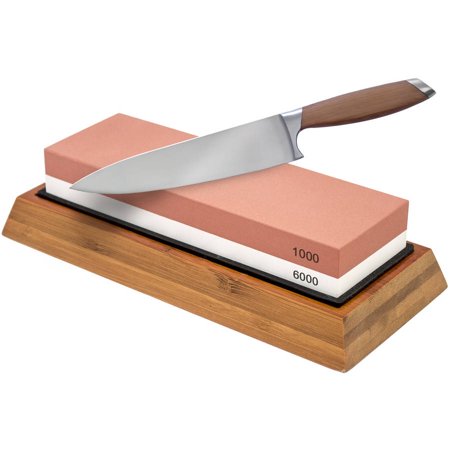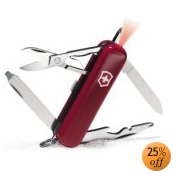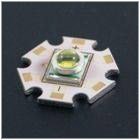Oh jeez. I just realized that I haven’t ever posted anything about this basic skill. I mean, some people might not know! And I know. So I should share!
It’s not hard, but it’s a thing. You can learn how to do it if you read how. I should also probably post a YouTube video.
My uncle Tim first showed me how when I was 14. I probably didn’t listen very well. When I finally figured it out I realized that it was what he had told me.
You have a dull knife (or ax or shovel). Then you get a coarse whetstone. I like the bigger ones that are, like, 3″ x 9″ x 1.5″ or so. But any will work. Then you put some veg oil or water or spit on it. I prefer spit. It’s just right. You put the whetstone on a firm, level surface. Then you hold the edge of the knife on it at about a 30-40 degree angle. Just feel it out. 45 degrees feels too steep. But it’s up to you. Then you run the whole length of the blade in a circular motion around on the whole length of the whetstone.
If you have an older knife, the edge may have been sharpened so much that it is no longer even. If you have an older whetstone it might have been used to much that it is no longer level. If either of these are the case, adjust accordingly. (A whetstone can be flattened on a sheet of that black wet-dry sandpaper of a course grit laid on a pane of glass. Then you whet it or oil it and run it in a circle and basically sharpen your whetstone.)
Depending on how dull your blade is, you work it like I said for a few minutes on one side. Then you flip it over and work the other side for the same amount of time. You don’t have to time it. Just about the same.
You don’t press it down hard but you don’t just let it float, either. You’re making an edge, not bending one.
After you do this on both sides of the blade for maybe 3 times on each side (with a dull blade) and for about 5-7 minutes total, something special will happen which is the foundation of sharpening: you will get a burr forming on the off side of one of the edges.
To keep the sharpening feeling good you’ll want to re-wet or re-oil or re-spit it from time to time. You’ll know when it’s dry to re-do it.
You need a sheet of paper towel to help you.
You dry the blade and your finger tip and you feel down the glade from the thick part to off of the edge. You might have to blow on your fingertip to make sure it’s dry. You feel for a burr. You can use a few fingertips. You feel it until you feel an even burr the whole length of the blade. Most blades have a curve. You want to use your circularly sharpening motion for the curve as well — and keep the same angle.
It’s amazing how you can quite easily tell if you’re keeping a steady angle. It’s not exact. It’s just steady that you want.
So you work both edges until you feel a burr coming up evenly along one entire side. You might start feeling a burr come up on part of an edge. Then you keep working it and feel the burr along more of the edge. Flip it from side to side. It’s hard to tell which side will get the uniform burr first. Once you get a uniform burr then work the other side. Until you get a uniform burr “catching” your fingertips on both sides. You might end up working each side 2 or 3 times more until you verify that this is happening.
Once you get a burr on one side when you flip the edge and work the burred side, you’re obviously pushing the burr to the other side. You can also check that your “off side” which you are sharpening is entirely LOSING its burr each time.
Anyway, once you get a full-length burr appearing a couple times, you can just “slice into” your whetstone with a forward motion that will peel off the burr. At that point it’s kind of like a “wire” along the edge of the blade. And it will come off when you slice into the stone instead of using a circular motion. Indeed, it IS a wire. A micro-wire.
You can also lighten up on your motions as you develop the full-length burr and “feel it out.”
Now you can use a fine stone or flip your stone to the fine side. I like a 2-sided synth stone. But various grits of stone are available.
So then you start your motions again on the fine side. Until you raise a burr on the offside a couple times. Then you “slice” that one off as well.
The result will be a polished razor edge.
Actually, even with the coarse grit the result is a razor edge but it’s not polished and it won’t “pop” hairs off your arm as nicely.
You can play with steeper or finer edges. A steeper edge takes less time to develop. You can also study what kind of edge the blade had already. When resharpening it takes less time if you re-do the same edge it had. Or a steeper one. Steeper edges are tougher but they’re not as “slicey.”
After you use a blade a couple dozen times it needs to be touched up. You use a steel for that. Like a chef does. A steel tidies up an edge that hasn’t been worn down. You run the steel along the edge a dozen times on each side until you feel a burr forming on the off side, then you do it 5 times then a couple times. Then do a couple light slicing motions into the steel.
When you use a whetstone you remove some of your blade. When you use a steel you’re just shaping up an abused edge. A chef will steel their blades once or twice a night. But will only have knives resharpened like once a month.
When knives have been sharpened 100 times they will start to get a curve to the line of the edge. This makes sharpening awkward. You can do it but it’s better to re-profile the edge. I use a grinder to just make the whole edge straight again then I resharpen it. You can use a file to do this, too.
You can also use a file to re-sharpen a really dull knife. A file takes off more metal quicker than a stone will. It’ll save time. After you get a burr going on both sides with a file, move to a stone and you’re good in a few minutes. Otherwise, a really dull knife on a stone can take a half hour.
Different steels have differing hardnesses so how quick you can sharpen depends on the steel involved. A harder steel takes longer but stays sharp longer, too. People who work with knives tend to like softer steel. They just quickly resharpen as they need to.
There are lots of gadgets out there for sharpening. I suppose some are good. Some make it easier to keep a steady angle. Some are dumb. A stone is the thing. Some stones like oil, some water. It depends.
You can really get into sharpening. It’s kinda fun. The easiest part of the deep end is to use buffing compound on a wheel. It’s amazing how sharp and polished that stuff can get an edge. But my impression is that a few uses makes it a moot point.



